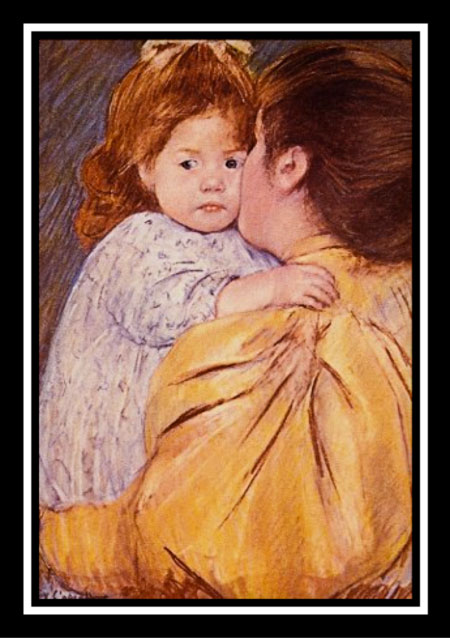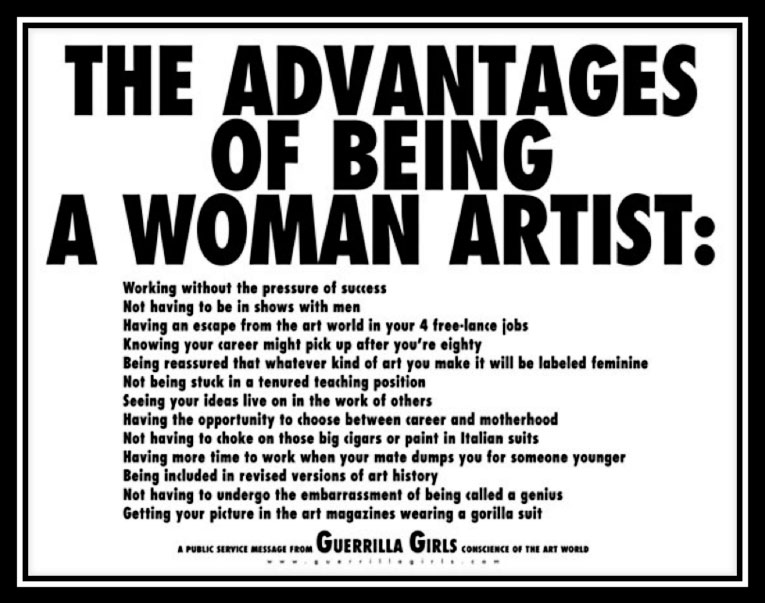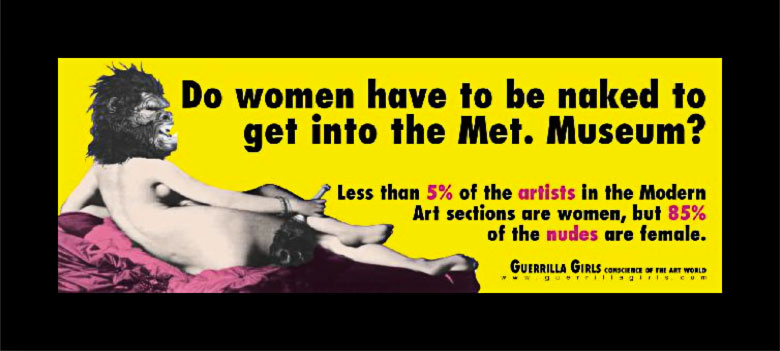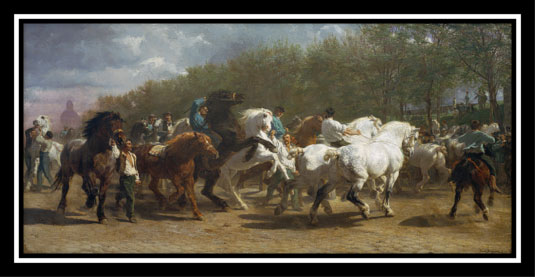The psychical organisation orders women to channel all their emotional energy on men, while the men ‘sublimate’ theirs into work, says Shulamith Firestone. Women have inspired most great works of art (if not being directly involved in the production), thus becoming the muse, the very core of the history of art borne out of great men. And so female nudes became a regular and where male nudes reached a high point, the men were homosexual.

The Maternal Kiss by Mary Cassatt.
Women failed to leave an indelible mark in the art scene in the past as they had to participate and compete in an all-male culture, on male terms, while being pressurised to prove themselves without discarding their female roles. “The tool for representing, for objectifying one’s experience in order to deal with it, culture is so saturated with male bias that women almost never have a chance to see themselves culturally through their own eyes… Thus, because cultural dicta are set by men, presenting only the male view… women are kept from achieving an authentic picture of their reality,” said Firestone.
Berthe Morisot and Mary Cassatt from the 19th century Impressionist School portrayed what could be called female subject matter and were thus categorised as minor painters, as they had a ‘lifted’ a set of traditions which were not their own. They were socially conditioned to depict life in a certain way and remained in the sidelines, while Renoir and Monet, who were also known for depicting scenes from the household, did pretty well for themselves. The problem lay in the fact that they were trying to outdo men in a culture created by them, in whose creation they had no role to play, and which could be easily manipulated by them. For a true female aesthetic to emerge, it would take a complete denial of all cultural tradition, starting with unlearning whatever one has been taught to believe as the absolute truth.
Sherry B. Ortner, a cultural anthropologist, is not convinced that devaluation of women at the hands of men is a result of biological determinism. She postulates that this might have occurred due to the fact that women are closer to nature than men, the latter being identified with culture (lacking natural creative functions, they tend to assert their creativity externally, ‘artificially’) at most times and there is a general tendency for culture to subvert nature. “De Beauvoir reviews the physiological structure, development, and functions of the human and concludes that ‘the female, to a greater extent than the male, is the prey of the species.’”
Guerrilla Girls, a feminist New York based group founded in 1985 by unnamed women “artists, writers, performers, and film makers who fight discrimination”, came up with a list in one of their notices in 1989:

The above publication is very obviously a satire, but it does manage to capture the essence of discrimination and marginalisation faced by women artists at the hands of critics around that time and even before.
Featured below is another poster by the Guerrilla Girls, using Ingres’ Odalisque, which gained popularity worldwide—

The Guerrilla Girls might be propagandist—all political groups with an agenda almost always are—but they end up raising significant and valid questions, such as why women artists have been neglected by art historians, and why there have been no great women artists in the past.
Nochlin asserts that if daintiness and a nuanced treatment of the medium along with the portrayal of domestic lifestyle be the parameters for ‘femininity’, then Rosa Bonheur’s Horse Fair was nothing but delicate, and the Dutch Little Masters, Chardin, and the impressionists Renoir and Monet, as well as Cassatt and Morisot have been known to illustrate household and children—the point here being that the subject matter or even the style of painting should not be criteria for a quintessential ‘feminine’ style. Courbet was probably one of the first modernist artists to paint the “female sex organ—the cunt—in his masterpiece L’Origine du monde: the forbidden site of specularity and the ultimate object of male desire; repressed or displaced in the classical scene of castration anxiety, it has also been constructed as the very source of artistic creation itself.”

Horse Fair by Rosa Bonheur.
Nochlin further says that great art is never just the expression of the artist’s emotions on the canvas; it is more than that, with a particular style, free of conventions developed over years of practice and experimentation. In this sense, “… there are no women equivalents for Michelangelo or Rembrandt, Delacroix or Cezanne, Picasso or Matisse, or even in the very recent times, for Willem de Kooning or Andy Warhol, any more than there are black American equivalents for the same. If there actually were large numbers of ‘hidden’ great women artists… then what are the feminists fighting for?” Things remain oppressive for those who were not fortunate enough to be born white males, women and blacks included.
The entire brouhaha surrounding the Great Artist is all but a myth, as for most of the initial ‘great’ artists art was just a profession of the lower social classes, passed from father to son. The absence of women from the art scene also holds true for the aristocracy, who might have dabbled in art but never took it up professionally, providing patronage instead. It is probable that the amount of time devoted to social functions made it impossible for both the upper class men and women in general to take it up as a full-fledged profession. The notion of individual genius as something innate does not exist per se, and scholars such as Piaget have stressed upon the fact that ability or intelligence is built-up step by step from infancy onwards based on observation and the patterns of adaptation-accommodation.
Feminist art emerged as a direct response to patriarchy and division of power and laws, questioning the depiction of women by the great artists as virgins, whores, or mythical creatures, objectifying the female form, giving sexual connotations to it, assigning traits such as vulnerability, passivity, nature, and purity to women, and using feminist imagery to challenge such gender stereotypes along with raising key political issues and exploring a female heritage. As Simone de Beauvoir put it, “One is not born a woman, one becomes one.” According to Lucy Lippard, feminist art was “neither a style nor a movement, but instead was a value system, a revolutionary strategy, a way of life… That what was revolutionary was not its forms but its content.”









Art knows no gender. If you have Picasso, you also have Amrita Sher Gill.Nature created Men and Women as complementary to each other. Somehow the present day enlightenment of women towards self-sufficiency drives a woman away from nature and when they miss the bus their frustration bursts out in denigrating men. Its nothing but the inferiority complex of a failed female that gives rise to such sentiments.
Clearly sir you haven’t paid much attention to my articles. If you have then I don’t think you have the required intellect, discernibility or maturity to engage in a fruitful conversation with me. Besides, I’d like to say that Amrita Sher-Gill was feminist in her approach to art. Her oil paintings especially her female nudes and her self portaits are devoid of ‘physical’ beauty aimed at attracting the male attention. It leaves the viewer uneasy. Her triangular composition of the three Indian women with lowered gazes and the general expression on their faces creates melancholia if anything else. These young women, perhaps girls, are awaiting their future which doesn’t look too hopeful to them. They certainly aren’t excited about it. Anyway, I digress. I’d suggest you read the first and the second part of my article to gauge my argument better. And the final part will be out soon so wait for it. If after reading you actually have something interesting to say to me or to say in general I’d like your feedback very much. This is a place for smart people so lets not indulge in redundant cliches. You are an MCP but must we make it so obvious? Atleast be witty even in your sexist ways.
Art is FELT and not analused mechanically. Anyway you r entitled to your view as much as I am to hold my views.
read ‘ analysed’ instead of ‘ analused’pl.
Then why comment on mine in the first place? And many would think that your logic (art should be felt not analysed) is heavily flawed. Any which way no point arguing about that with you. Doesn’t seem like you have much to say.
article is really appreciable…when an artist is woman then she is called woman artist and on the other hand when an artist happens to be a man,he just remains artist.Imagination of god as a male ,female authors adopting masculine pen names really add density to gender issue regarding art and culture.lookimg forward for next part.
hey the next part is out in case you didn’t get the time to check. :)